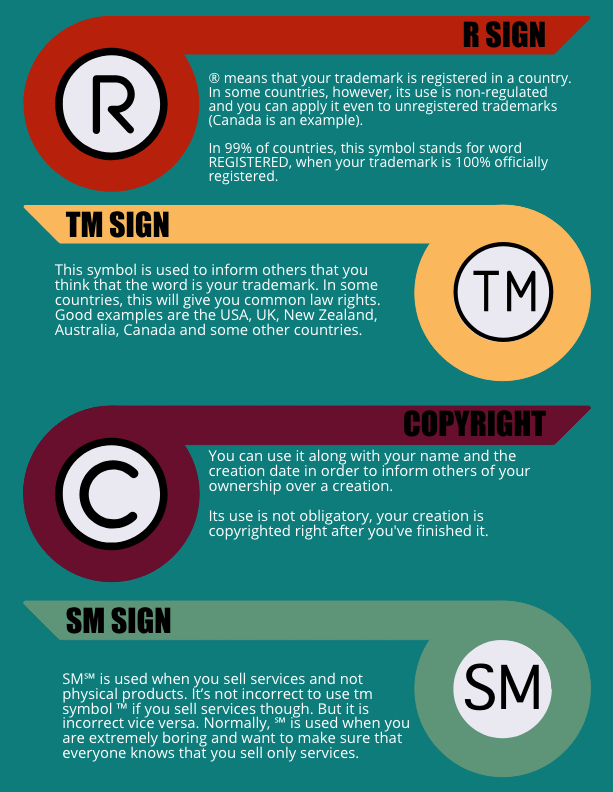

Trademark owners have some options to handle issues with foreign rule regimes, although there are drawbacks to them. What if you made an honest mistake and added a ® mark on products shipped to countries where the trademark is not registered? In Japan or India, such a mistake could lead to fines or even imprisonment. If you do not use a ® mark in Canada or Spain, your trademark is still enforceable, but you lose those rights if you do not include the ® mark on products sold in Mexico, Chile, Peru or the Philippines. In the United Kingdom, businesses can use the ® mark or "RTM" lettering to indicate that a trademark has been registered, even if that mark is not registered in the UK. If all of this is not confusing enough for you, here are some other trademark rules to consider. Trademark law varies from nation to nation and, if you are not careful, the way you mark your trademarks on product packaging can get you into trouble with foreign regulators. In the United States, ™ can be added on a product label even if the mark is not registered, but courts in Germany have held that ™ must be used in association with a registered trademark. Outside of common-law nations, consumers do not typically associate the ™ mark with any trademark rights. This means that ™ is often seen on products in the United States and Australia but does not hold much weight in many countries around the world. While most countries recognize the ® designation, the ™ is mostly a product of the English common-law system. In fact, throughout most of Europe, the use of the ® designation in association with a trademark that is not registered within that country may run the risk of violating rules on misleading advertisements. However, in France, there is no similar requirement to include the ® designation on packaging and labels. In the United States, trademark owners are compelled to use ® designation on their product packaging or else they might miss out on some of the benefits of trademark ownership, such as claims to profit recovery or damages in an infringement case. Nevertheless, how these markings are used in different countries means that companies cannot take a "one size fits all" approach to packaging and labeling. A "®" mark constitutes a claim of having stronger trademark rights than a "™" mark, which only claims use of a certain sign, independent of actual registration. The "®" indicates that a trademark has been registered with a country's trademark office, and the "™" means that the user is claiming rights to the brand without registering the mark. Markings of a trademark statusįirst, many countries recognize two different types of markings that denote trademark status: ® and ™. Even how you mark your trademarks on product packaging can get you into trouble with foreign regulators if you are not careful. Trademark law varies from nation to nation, and staying on the right side of the rules takes some research. Handling an increasing number of sales is an excellent problem to have, but it could pose some interesting issues for firms that are trying to manage their trademark rights, especially when those sales are based in other countries. You might have some stiff competition, but you also have a brand that consumers will associate with your product or service. Congratulations! That is an excellent step towards making sure that your company can gain a strong position in your industry. Your business has successfully registered trademarks in your home country.


 0 kommentar(er)
0 kommentar(er)
